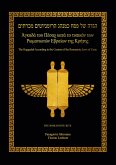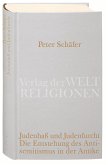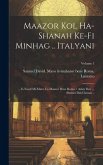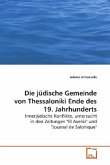The Synagogal liturgy of the Romaniote Jews represents the oldest European Jewish prayer rite. In fact the Greek-speaking Jews descent from a Jewish group which developed their own prayers and customs within the Greek Civilisation long before the diaspora. As we can see from Old Testament translations, from the Genizah fragments and from later manuscripts the Hellenistic and Romaniote Jews started early to use their mother tongue, in this case Greek, as a liturgical language and combined their old prayers which they brought from Palestine with new customs. These circumstances partly describe the extraordinary position of the Romaniote rite within all the other rites. Some Romaniote practices seem to have been integrated into the other rites as well. Parallels in the liturgy between the Jews in the lands east of the Elbe River and the Greek-Jewish ritual, can be seen as such an influence, which is perfectly understandable as Greek-speaking Jews have been the first Jewish settlers in Eastern Europe. Other examples on how Greek-speaking and Byzantine Jews influenced the European Jewry within the Byzantine Commonwealth and the centuries before and after it could be easily added. After all these centuries the great work of the Romaniote scholars and paytanim is unquestionable. Such as Tobiah ben Eliezer from Northern Greece who wrote a commentary to the Torah and the Megillot, the Lekah Tov, and Zerahiah the Greek, the author of the famous ethical work Sefer ha-Yashar. But above all the Romaniotes recognised the writing of piyut (from Greek poietes - poet) as their genre.The present publication ''reprints'' a prayer book according to the rite of the Romaniote Jews, which is taken from a medieval manuscript, the readings of the haftarot according to the Romaniote minhag, a collection of several piyutim and selichot and several other texts which are important to the Romaniote rite.Since this book represents the first print of a Romaniote prayer book since the 17th century, it truly can be said that an easy access to this old liturgy has been created now.
Hinweis: Dieser Artikel kann nur an eine deutsche Lieferadresse ausgeliefert werden.
Hinweis: Dieser Artikel kann nur an eine deutsche Lieferadresse ausgeliefert werden.








